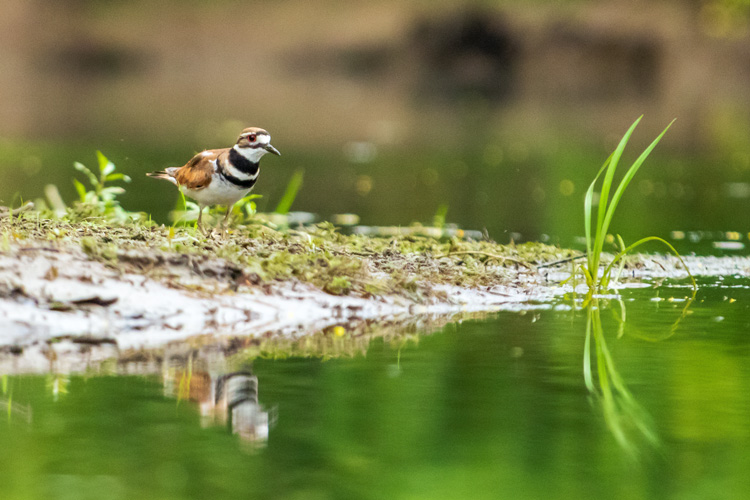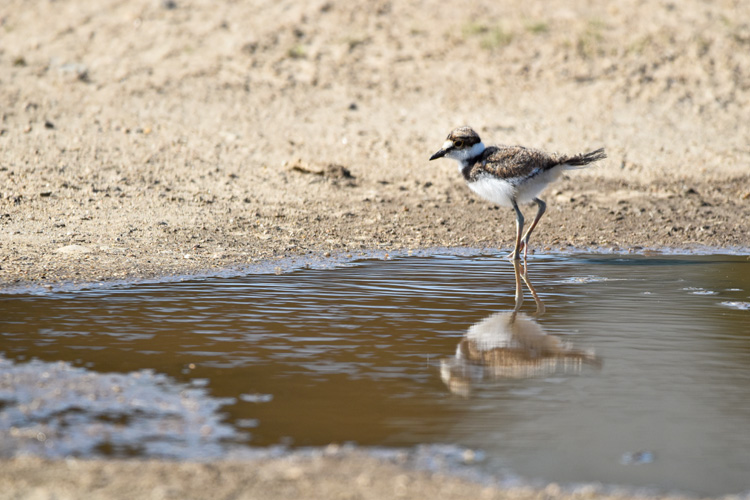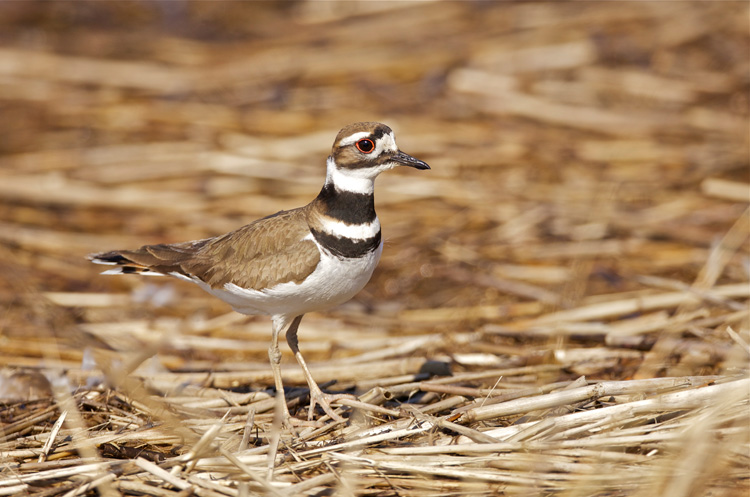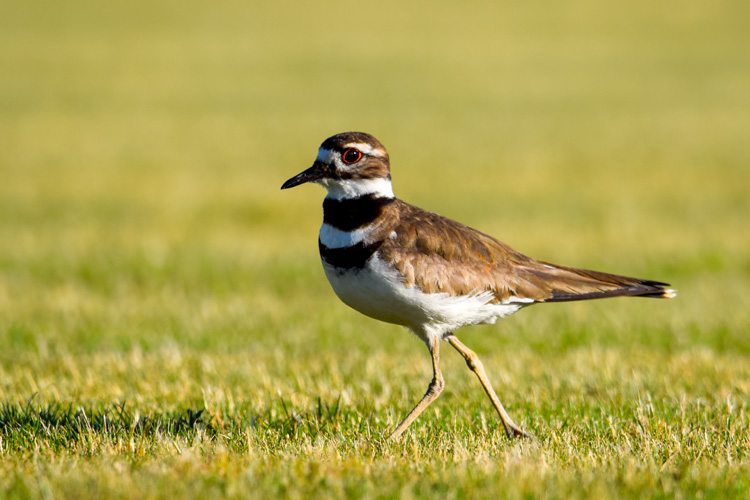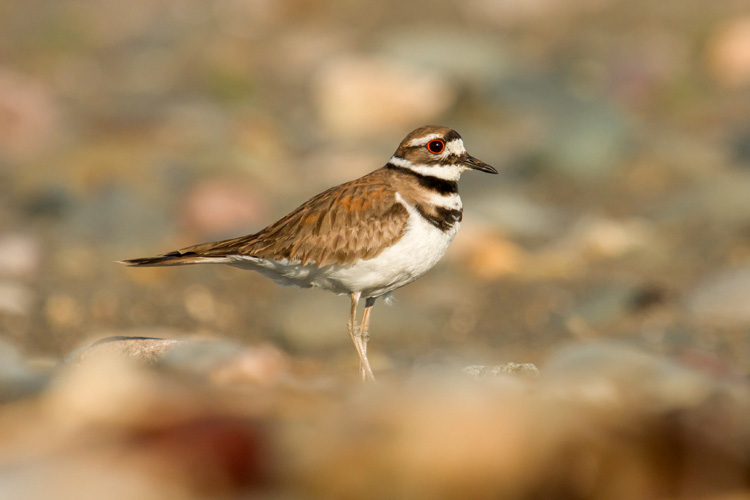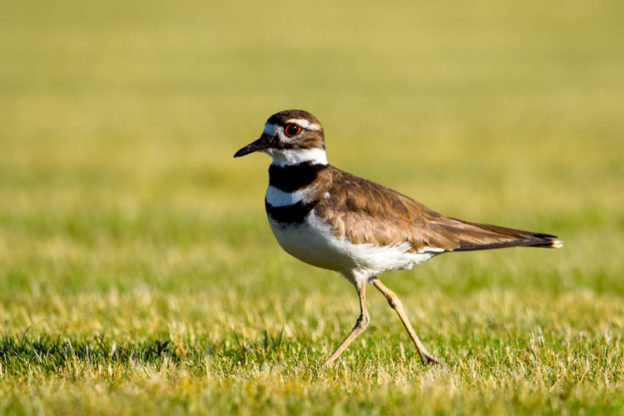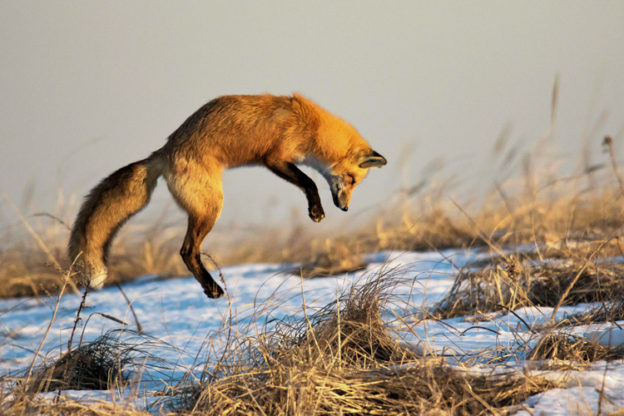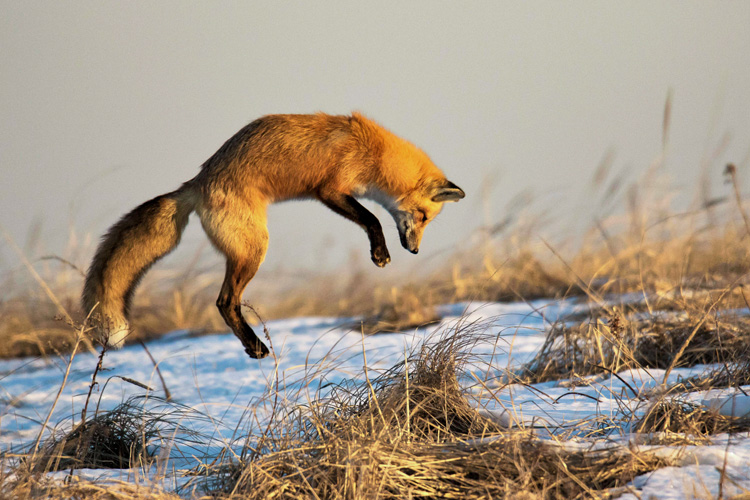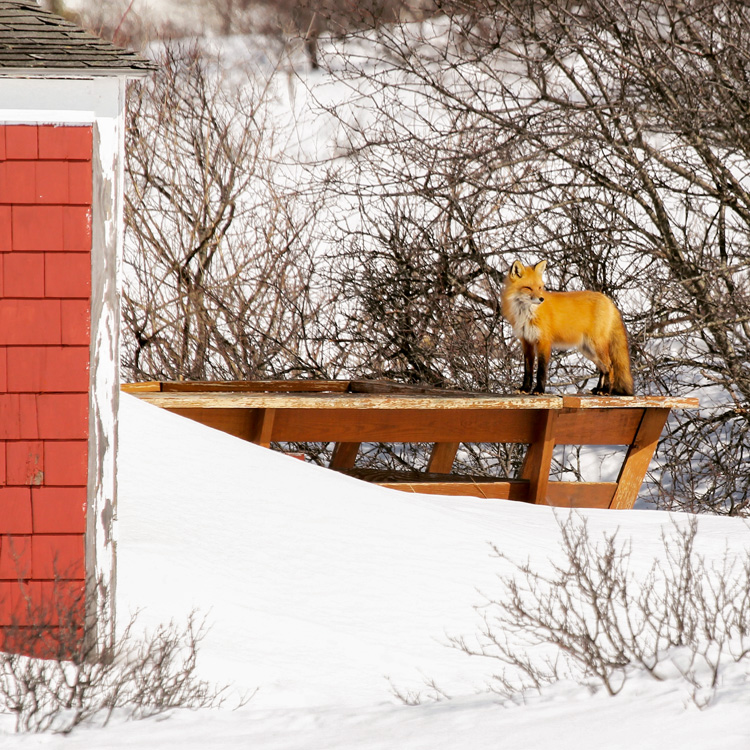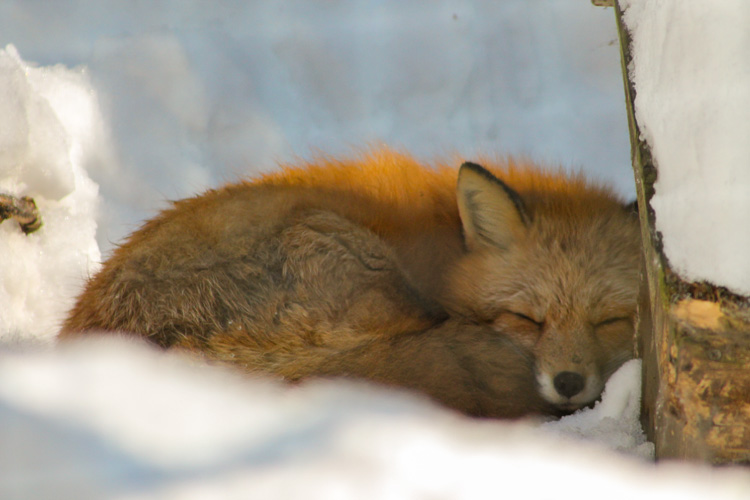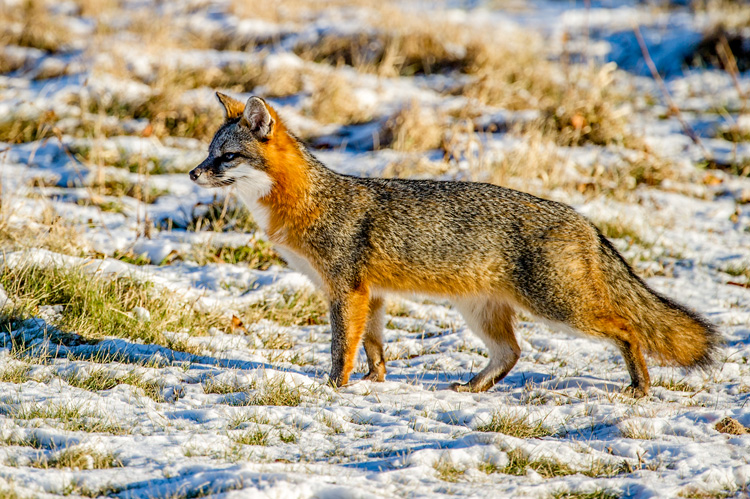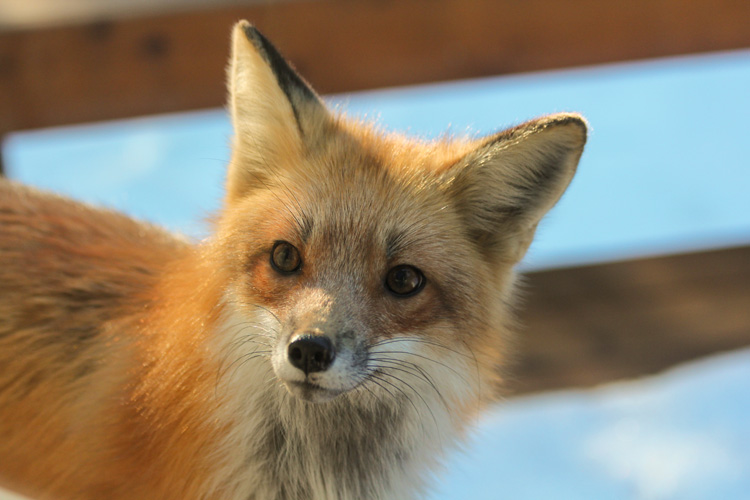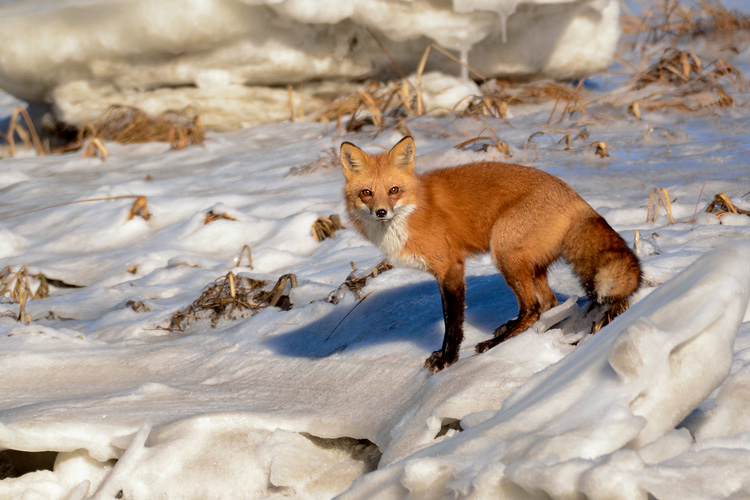Among the earliest of spring migrants, Killdeer arrive as early as late-February in exceptionally warm years. No, they’re not raptors despite their fierce-sounding name. A member of the plover family, Killdeer are one species of shorebird you don’t need to go to the beach to enjoy; listen for the shrill kill-deer, kill-deer call for which they are named (earlier names included Chattering Plover and Noisy Plover) in fields and pastures, and on playgrounds, lawns, unpaved driveways, beach dunes, and other open areas.
Killdeer have distinctive color markings: tawny-colored on top and white below, with two black bands across the breast (although juveniles only have one), and black and white patches marking the face, including a black streak that runs through their large eyes. The rusty-colored rump is more visible when the bird is in flight or during a distraction display: When a parent Killdeer (either on a nest or herding young) feels threatened, it will fan its tail, exposing the red rump, and lurch around feigning injury to draw the potential predator away from the nest or young. Talk about protective parents!
Although they won’t visit your backyard feeder, keep an eye out for Killdeer in large lawns and fields where they often forage for insects on the ground and may even dig their shallow nests in the bare ground.
Enjoy these five photos of Killdeer from our annual Picture This: Your Great Outdoors photo contest and check out our Quick Guide to Killdeer.
